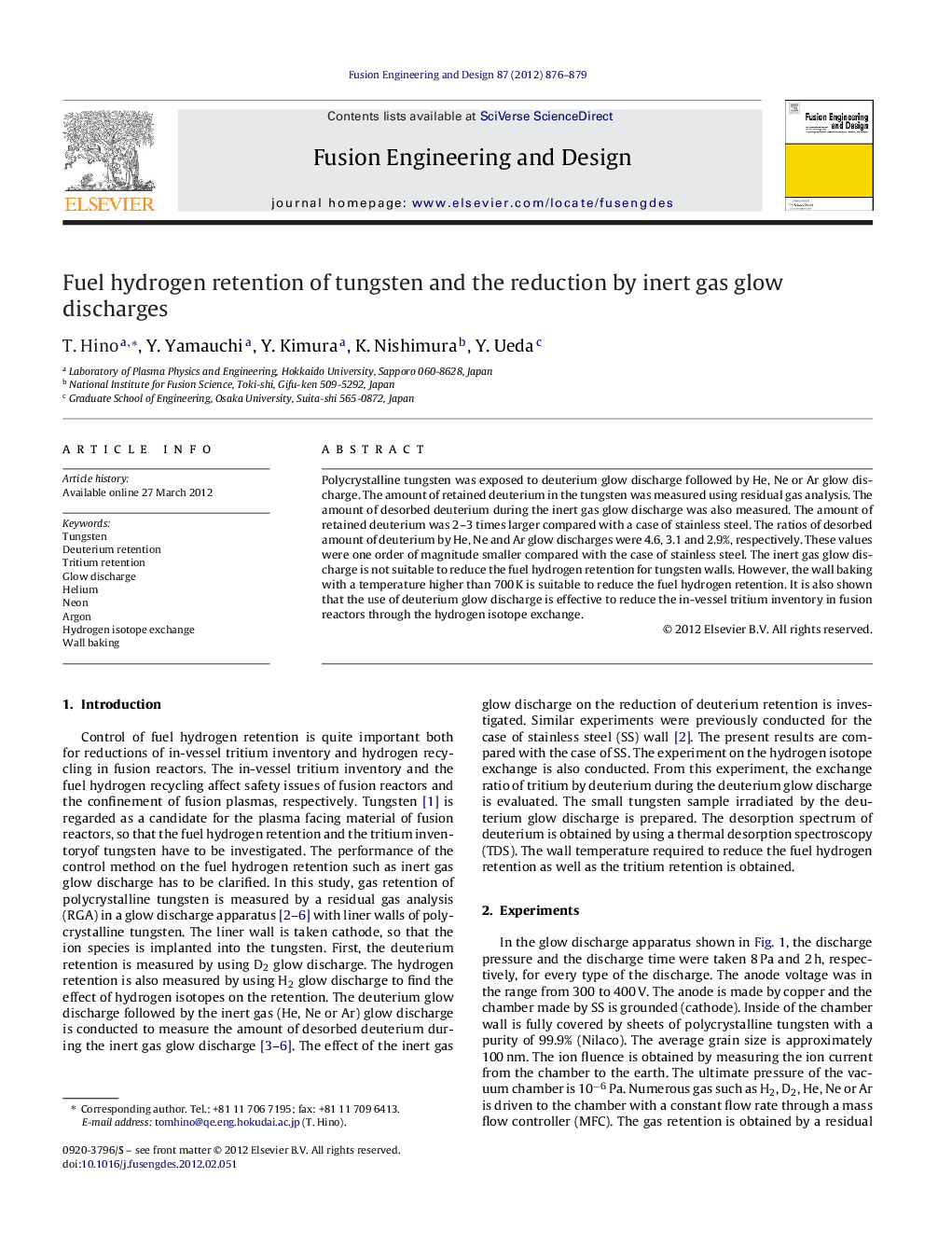| Article ID | Journal | Published Year | Pages | File Type |
|---|---|---|---|---|
| 272287 | Fusion Engineering and Design | 2012 | 4 Pages |
Polycrystalline tungsten was exposed to deuterium glow discharge followed by He, Ne or Ar glow discharge. The amount of retained deuterium in the tungsten was measured using residual gas analysis. The amount of desorbed deuterium during the inert gas glow discharge was also measured. The amount of retained deuterium was 2–3 times larger compared with a case of stainless steel. The ratios of desorbed amount of deuterium by He, Ne and Ar glow discharges were 4.6, 3.1 and 2.9%, respectively. These values were one order of magnitude smaller compared with the case of stainless steel. The inert gas glow discharge is not suitable to reduce the fuel hydrogen retention for tungsten walls. However, the wall baking with a temperature higher than 700 K is suitable to reduce the fuel hydrogen retention. It is also shown that the use of deuterium glow discharge is effective to reduce the in-vessel tritium inventory in fusion reactors through the hydrogen isotope exchange.
► The performances of inert gas glow discharges for reduction of fuel hydrogen retention in tungsten were systematically investigated. ► For the tungsten with rough surface structure, the reduction of fuel hydrogen retention by inert gas discharges is quite small. ► The deuterium glow discharge is quite useful to reduce the tritium retention in plasma facing walls in fusion reactor. ► The wall baking with temperature higher than 700–800 K is also useful to reduce the tritium retention in plasma facing walls.
